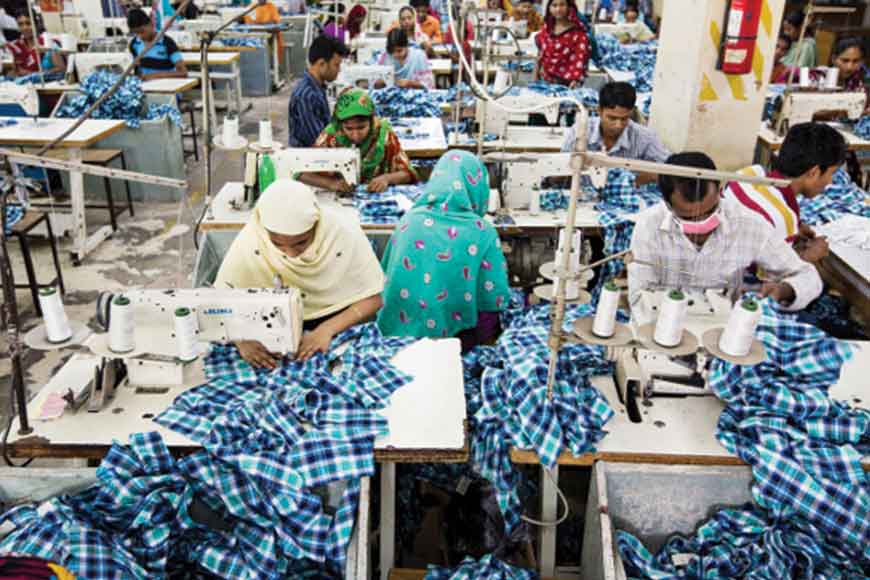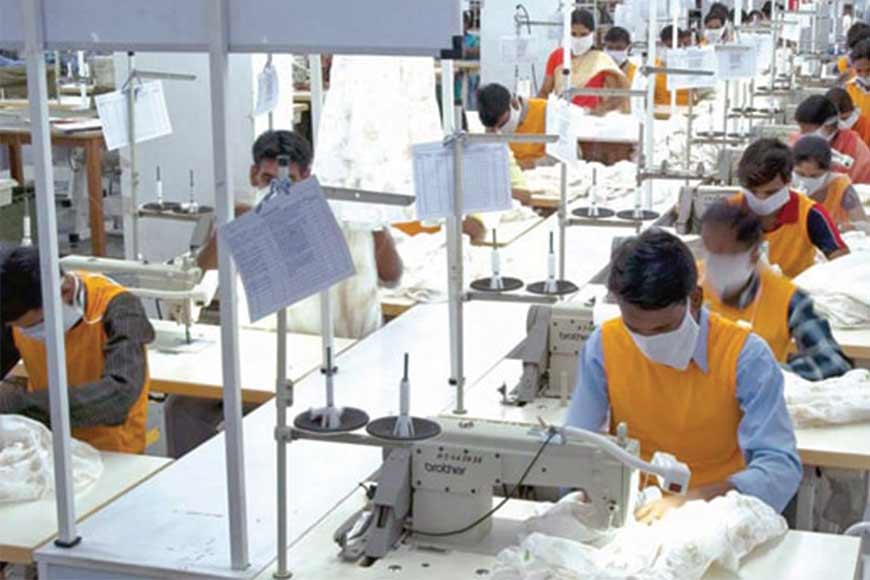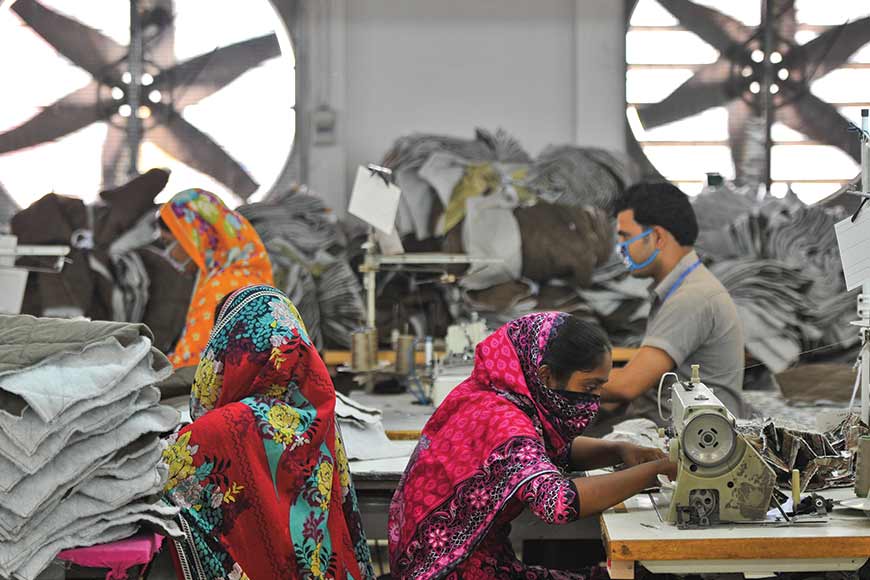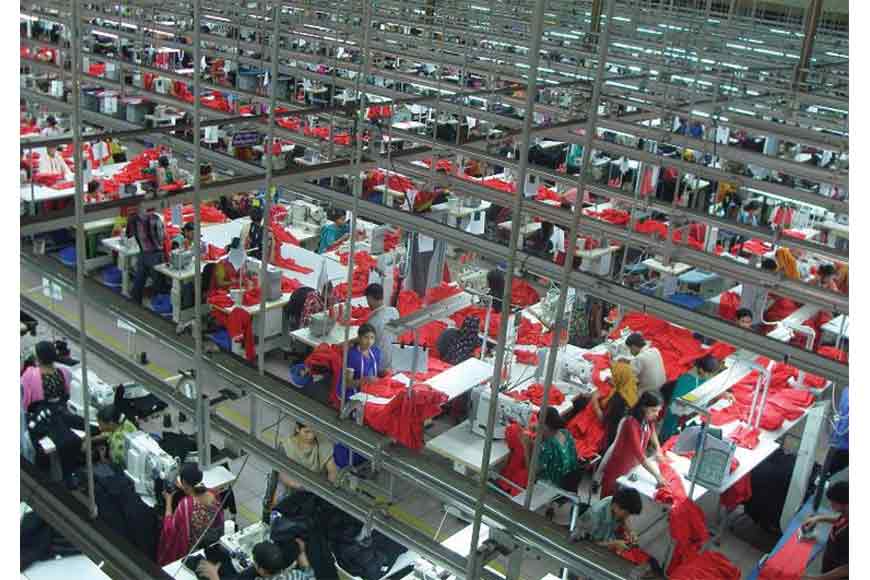Success story: Bangladesh’s textile exports, second only to China

As success stories go, it couldn’t get much bigger than this. And it is a growing story, too. Sample this: a sector that contributes 84 percent of the total exports of a country, and 11.17 percent of its Gross Domestic Product (GDP), also making it the country’s chief foreign exchange earner. This is the current picture of Bangladesh’s textile industry, a global success story in local entrepreneurship, and the principal driving force behind Bangladesh’s rapidly growing economy.
As of now, Bangladesh is the world’s second-largest apparel exporter for Western fast fashion brands, behind only China. Roughly 60 percent of the contracts for Western brands are with European buyers, about 30 percent with American buyers, and 10 percent with others. From all accounts, only about five percent of the country’s textile factories are owned by foreign investors, with most of the production being controlled by local investors.

The story, of course, has a long history behind it. As Asif Ibrahim, managing director of the Bangladesh Garment Manufacturers and Exporters Association (BGMEA) and former president of the Dhaka Chamber of Commerce puts it, the development happened in two phases. “Post-1971, we saw the nationalization of individual industries. And then after 1978, we saw the return of private ownership,” he says.
As of now, Bangladesh is the world’s second-largest apparel exporter for Western fast fashion brands, behind only China. Roughly 60 percent of the contracts for Western brands are with European buyers, about 30 percent with American buyers, and 10 percent with others.
In point of fact, until the early 1980s, the government owned almost all spinning mills in Bangladesh and 85 percent of the textile industry’s assets, as Klaus Lorch wrote in his 1991 essay, ‘Privatization Through Private Sale: The Bangladeshi Textile Industry’. However, under the New Industrial Policy (NPI) of 1982, a large number of these assets, including jute mills and textile mills, were privatized and returned to their original owners.
In a region historically known for the superiority of its textiles, right from the Mughal era when the Bengal ‘subah’ was famed for its muslins and cottons, it should perhaps come as no surprise that Bangladesh has claimed a place at the forefront of the global textile sector. Added to this traditional expertise has been constant government and private efforts to advance the industry in every way possible, which has resulted in the current scenario.
Inevitably, however, the journey has not been without hurdles. From labour safety to concerns regarding child labour, from workers’ rights to environment-friendliness and women’s rights, the industry has had to deal with plenty of challenges, particularly in the decades between the 1990s and 2000s. On the one hand, as Ibrahim points out, “In a Muslim-majority country, the emancipation of women through their employment in the textiles and garments industry is not something you can ignore.” On the other, questions have been raised about these same women’s safety and income security, particularly in the wake of the Covid pandemic and the ensuing economic crisis.
Dr Khondaker Golam Moazzem, research director of the private thinktank Centre for Policy Dialogue (CPD) says one good thing about the challenges facing the textiles industry is that there have been no attempts to deny their existence. “Whenever a crisis has come up, attempts have been made to sort it out. In the ’80s, the issue was adequate leave for workers, which was resolved in the ’90s. In the ’90s, the focus was on workers ID in factories, their working conditions, and special leave for women workers, such as maternity leave etc. In the 2000s, we focused on workplace and industrial safety in the wake of major industrial accidents. Currently, the focus is on proper nutrition for workers, and environmental compliance,” he says.

In these times of economic hardship, the issue of income security and an unemployment insurance scheme for workers who have lost their jobs are on the anvil, adds Dr Moazzem. “The good thing is that all stakeholders, including brand buyers and development workers, are uniting to resolve the challenges,” he says. Also in the pipeline is the question of workers’ representation through properly constituted trade unions, which is being discussed at various levels, says Dr Moazzem.
Dr Khondaker Golam Moazzem, research director of the private thinktank Centre for Policy Dialogue (CPD) says one good thing about the challenges facing the textiles industry is that there have been no attempts to deny their existence. “Whenever a crisis has come up, attempts have been made to sort it out.

Through the decades, various factors have contributed to Bangladesh’s current preeminent position, such as the civil war in Sri Lanka in the 1980s, which compelled European and American buyers to look elsewhere, steady support from the government and banks, and a readiness to comply with child labour and safety guidelines set by Western buyers, points out Ibrahim. “The other unique advantage that Bangladesh enjoys is that, unlike the textile industries of other Asian countries such as Vietnam, Cambodia, Japan, Korea, or China, the investment is local. Combined with an abundant supply of labour and government support, the results have been outstanding.”
Detractors continue to say that much more can be done to make the sector labour-friendly, but Dr Moazzem says work is in progress. “Thanks to the focus on this industry from the beginning, we have had a chance to highlight the problems that it faces, too. What we really need to do is to extend the same support to other industries like chemicals and plastic, for instance. That is our next goal.”










